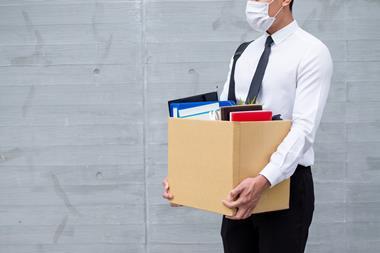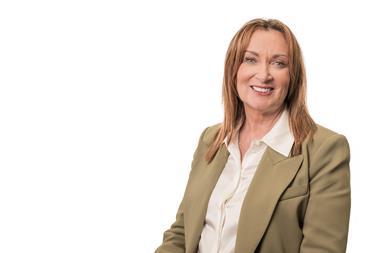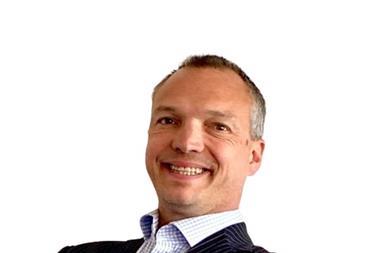In the privacy of our own homes, it may feel like lockdown is never going to end. However, employers must be proactive in shooing away fatigue-focused thoughts if they want their businesses to succeed in the long-term
By Associate Editor Katie Scott
At the end of last year, between Lockdown 2.0 and the post-Christmas Lockdown 3.0, I was chatting to Gallagher Bassett’s chief client officer for the UK Peter Diskin about a notable trend that was affecting all manner of businesses up and down the UK – lockdown fatigue.
Although many of us are enjoying the perks of home working, insurance is still a collaborative, relationship-driven, people-centric industry, which is very difficult to replicate within the four walls of my box room-come-home office.
Equally, we are now fast-approaching the one-year milestone of when Covid-19 first crossed our radar, with the past year spent doing the hokey-cokey with our front doors to the tune of Boris Johnson’s national lockdown announcements.

The knock-on effect of this is that employers have to step up and take care of their staff if they wish their business to survive the pandemic and flourish in the future. As Diskin told me: “Whether you’re a broker or a carrier or a TPA, it’s all now around people, because the people are everything in that business.”
Companies must ensure “that people’s mindsets are in the right place and you’ve got to recognise that there is fatigue”, Diskin added.
A survey conducted by the Chartered Insurance Institute last month found that around six in 10 of the 336 insurance professionals polled have suffered depression, anxiety, emotional distress or another mental health condition during the Covid-19 pandemic.
This tells me that lockdown fatigue is certainly hitting the insurance industry - and hitting it hard.
Farewell fatigue
Luckily, Diskin had some ideas of how to combat ’lockdown fatigue’.
Firstly, he recommended taking the lockdown period one month at a time, rather than looking at it as a continuous, never-ending “block”.
“What do we need to do in the next month to keep the fatigue factor out of things? So, that’s freshening up staff by giving them alternate hours to work. Is it actually to enliven staff with additional duties or variable duties?” he explained.
He used his team at Gallagher Bassett as an example to demonstrate his point: “One of the things I’ve done with my team is I’ve shared the duties of chairing our sales and client service meetings and it is on a rotational basis, which keeps everyone engaged.
“We have a light-hearted scoring system where we score the person who’s chairing the meeting, whether they’ve brought humour or variety, they’ve covered the points, they’ve made the minutes – it’s then upskilling them for any time that we come out of this, they have had that experience.
“Just knowing [how your staff feel] at any given time and if they do need a break, make sure they’re getting out and they’re getting sufficient exercise, they’re getting enough sleep and they’re turning up to work when they’re meant to, to work in a really nice peace of mind.”

Surveying staff is also a useful tool, Diskin added, to help gauge the appetite for particular working patterns moving forward – in my opinion, a blend of home and office working will swiftly become the norm.
Equally, the leadership team can’t rest of their laurels – they must practice what they preach, Diskin continued. “If the leadership are looking fatigued and are feeling fatigued then that’ll be showing right through to the person in the team taking the first notification of loss call, or the person who is dealing with the frontline broker,” he said.
“It’s important that you lead by example at an executive level to make sure you’re walking the talk and having your breaks, making sure that your holiday is used effectively and that when we are on at work, then we’re here to work.”
Lastly, communication is king – this ensures that everyone knows their specific part to play in driving the business forward through the pandemic. Communications may look slightly different, however.
Diskin explained that “shortening the frequencies of your meetings” could help fight employee fatigue as “instead of meeting for an hour a week on Friday, that might be a meeting for half an hour every day”.
This ensures “that the people, either in frontline services right through to executive leadership, are in tune with where the business is moving and then reinforcing what role everyone plays”.
The pandemic presents a finely balanced seesaw between opportunity and challenge; with no defined end date in sight for our most recent lockdown stint, I agree with Diskin that “lockdown fatigue” almost feels like it’s becoming the norm.
However, employers must use this time wisely to invest in and nurture their people in terms of skills development, physical health and mental wellbeing. Not only will these building blocks ensure business survival through these gruelling lockdown months, but it could also boost employee retention and engagement – two traits that will certainly help organisations gain momentum as we come out of the pandemic.













































No comments yet